第58章 MONEY OR SIMPLE CIRCULATION(39)
Because universal labour-time itself can only display quantitative differences,the object to be recognised as its specific embodiment must be able to express purely quantitative differences,thus presupposing identical,homogeneous quality.This is the first condition that has to be fulfilled if a commodity is to function as a measure of value.If,for instance,one evaluates all commodities in terms of oxen,hides,corn,etc.,one has in fact to measure them in ideal average oxen,average hides,etc.,since there are qualitative differences between one ox and another,one lot of corn and another,one hide and another.Gold and silver,on the other hand,as simple substances are always uniform and consequently equal quantities of them have equal values.[1]Another condition that has to be fulfilled by the commodity which is to serve as universal equivalent and that follows directly from its function of representing purely quantitative differences,is its divisibility into any desired number of parts and the possibility of combining these again,so that money of account can be represented in palpable form too.Gold and silver possess these qualities to an exceptional degree.
As means of circulation gold and silver have an advantage over other commodities in that their high specific gravity --representing considerable weight in a relatively small space --is matched by their economic specific gravity,in containing much labour-time,i.e.,considerable exchange-value,in a relatively small volume.This facilitates transport,transfer from one hand to another,from one country to another,enabling gold and silver suddenly to appear and just as suddenly to disappear --in short these qualities impart physical mobility,the sine qua non of the commodity that is to serve as the perpetuum mobile of the process of circulation.
The high specific value of precious metals,their durability,relative indestructibility,the fact that they do not oxidise when exposed to the air and that gold in particular is insoluble in acids other than aqua regia --all these physical properties make precious metals the natural material for hoarding.Peter Martyr,who was apparently a great lover of chocolate,remarks,therefore,of the sacks of cocoa which in Mexico served as a sort of money.
"Blessed money which furnishes mankind with a sweet and nutritious beverage and protects its innocent possessors from the infernal disease of avarice,since it cannot be long hoarded,nor hidden underground!"(De orbe novo [Alcala,1530,dec.5,cap.4].24)Metals in general owe their great importance in the direct process of production to their use as instruments of production.Gold and silver,quite apart from their scarcity,cannot be utilised in this way because,compared with iron and even with copper (in the hardened state in which the ancients used it),they are very soft and,therefore,to a large extent lack the quality on which the use:value of metals in general depends.Just as the precious metals are useless in the direct process of production,so they appear to be unnecessary as means of subsistence,i.e.,as articles of consumption.Any quantity of them can thus be placed at will within the social process of circulation without impairing production and consumption as such.Their individual use-value does not conflict with their economic function.Gold and silver,on the other hand,are not only negatively superfluous i.e.,dispensable objects,but their aesthetic qualities make them the natural material for pomp,ornament,glamour,the requirements of festive occasions,in short,the positive expression of supra abundance and wealth.They appear,so to speak,as solidified light raised from a subterranean world,since all the rays of light in their original composition are reflected by silver,while red alone,the colour of the highest potency,is reflected by gold.Sense of colour,moreover,is the most popular form of aesthetic perception in general.The etymological connection between the names of precious metals and references to colour in various Indo-European languages has been demonstrated by Jakob Grimm (see his History of the German Language ).
Finally the fact that it is possible to transform gold and silver from coin into bullion,from bullion into articles of luxury and vice versa,the advantage they have over other commodities of not being confined to the particular useful form they have once been given makes them the natural material for money,which must constantly change from one form into another.
Nature no more produces money than it does bankers or a rate of exchange.
But since in bourgeois production,wealth as a fetish must be crystallised in a particular substance,gold and silver are its appropriate embodiment.
Gold and silver are not by nature money,but money consists by its nature of gold and silver.Gold or silver as crystallisation of money is,on the one hand,not only the product of the circulation process but actually its sole stable product;gold and silver are,on the other hand,finished primary products,and they directly represent both these aspects,which are not distinguished by specific forms.The universal product of the social process,or the social process itself considered as a product,is a particular natural product,a metal,which is contained in the earth's crust and can be dug up.[2]